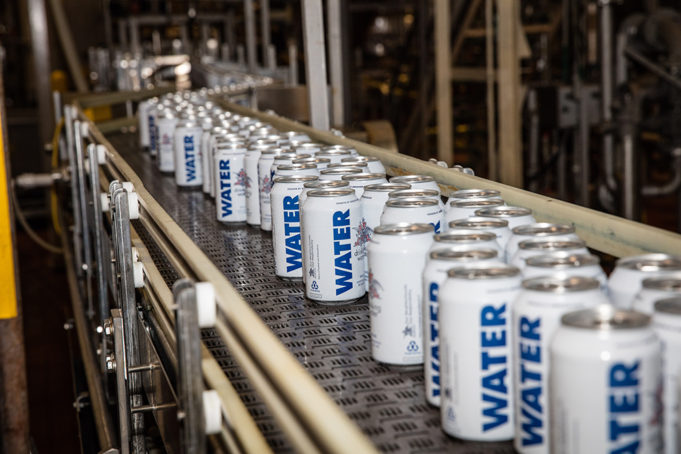We’ll remember Sunday’s Super Bowl for a great game wherein a contentious, championship-starved city saw its boys defeat a near-dynasty in a close and fascinating game. It offered a memorable and intricate halftime show.
We might not remember it as one of the great Super Bowl commercial showcases.
In fairness, it’s not really equitable to judge Super Bowl commercials by the standards of the past. The memories we retain of Michael Jordan and Larry Bird competing for a Big Mac and Monster.com‘s middle-management aspirants probably obscure those years’ uninspired tax preparer submissions or dull dotcom spots. Were the Starr Packers better than the Favre Packers? Were the Bud Bowl beer bottles better than the Coke bottle that quenched Mean Joe Greene’s thirst? Hard to say.
My personal favorite spot this year came from M&Ms and starred Danny DeVito. The Tide ones making light of the entire Super Bowl spot phenomenon probably struck a few chords. And the intertwined celebrity-driven raps from corporate siblings Doritos and Mountain Dew tweaked the marketing geek in me.
2018 will likely be known in Super Bowl commercial lore, however, as the year of corporate social responsibility. An outsized number of advertisers based their offerings around recounting good things they do in the community or other messages indicating they care about more than the bottom line. I counted at least eight (more if you include stuff like Toyota’s Team USA support ads and Coke’s message of inclusion) who took that tack. Some mostly celebrated their own roles in the community endeavor, while others offered a way to help a related cause via online donations.
When I’ve worn my marketing hat, I’ve always felt companies walked a fine line when attempting to communicate about their social responsibility initiatives. People don’t generally like braggarts, and an acquaintance who informs us about how unselfish he or she is makes us suspicious of his or her true motives. That doesn’t mean companies can’t or shouldn’t use community initiatives for marketing purposes, only that one has exercise care not to invite skepticism about one’s intentions. That’s especially true in the area of advertising, where the audience expects to see messages extolling a company’s virtues. If you appear to be saying, “We’re not interested in marketing ourselves, we’re just interested in this worthy cause,” but then are perceived as actually delivering a marketing message because you overpraise your own contributions, you’ve got a chance to turn people off instead of improving your brand image.
The adage “show me, don’t tell me” comes to mind here. Be bold in the doing, subtle in the recounting. In a lot of ways, I think social media works far better for showing off community work than traditional advertising. Playing the long game, where you consistently focus on promoting the cause itself, while including your own involvement in increments only large enough to establish your bona fides, feels imminently more authentic then loudly (and expensively) proclaiming how much you care.
Sunday, Budweiser showed off a beautiful spot chronicling how one of their breweries can switch from canning beer to packaging water directed to disaster victims. One of the nice stories it told was of the devotion of its employees, and praising good works done by one’s staff can be an authentic-feeling technique. If I’d made “Stand By You,” though, I might have considered losing the staged opening shots with the brewery manager and the end slate telling us they’ll stand by us. Perhaps it would have enhanced the authenticity to just show us real footage of the canning machine conversion and the water being delivered, followed by information about how people could contribute to disaster relief or seek assistance if they lacked necessities. The company had some of that messaging available online, but it didn’t make it into what they showed in the Big Game.
In a time when big corporations have come under criticism, some deserved and some less so, the spot did remind us how the resources of big companies can add value to our lives in times of crisis. In terms of how such notions specifically applied to Budweiser, more “show” and less “tell,” especially with legitimately authentic social media support, might have enhanced the eight figures the brewer likely spent on the effort. At press time, comments on the spot on the company’s social media were mixed. Some praised Anheuser-Busch for its water donations and others wrote: “Yeah brag about your tax write-off” or “The truly great companies that donate product, money or time are the ones that are humble and do not use a disaster or people in need as an opportunity to promote themselves through commercials or videos patting themselves on the back to get attention and recognition for helping. Typical corporate behavior where putting the focus on the company overshadows the actual cause.”
A lot of companies spent millions on advertising Sunday. Some chose to deliver messages about how their companies embrace certain forms of altruism. Others chose to use a riled-up Martha Stewart to sell a new line of sandwiches, and perhaps they will put some of those proceeds into charity initiatives. How well those strategies work for them depends on how well they do at show and tell.











